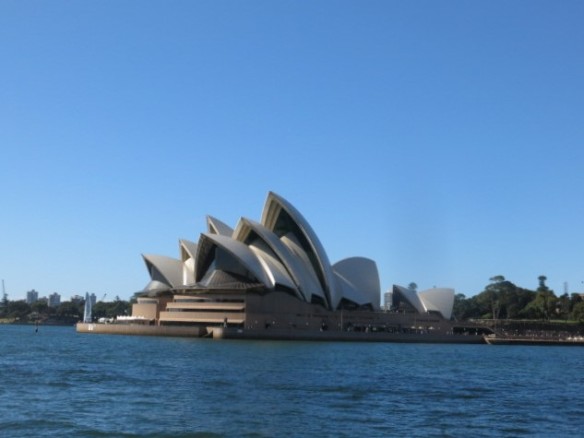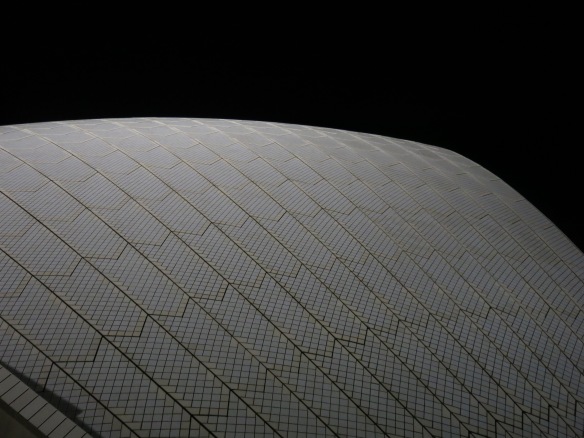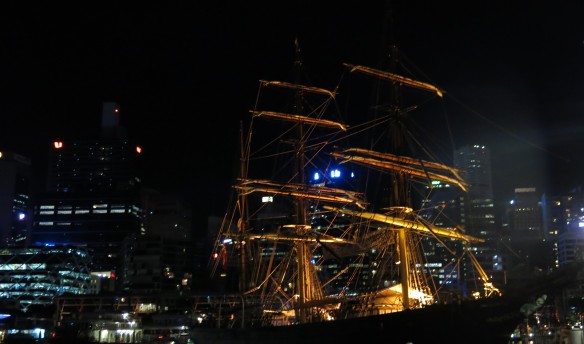
Sydney Harbor without a doubt defines the city of Sydney, Australia.Distinguishing landmarks such as the Opera House and the Sydney Harbor Bridge simply help define this long, magnificent stretch of water. As symbolic as the Opera House is to the city, if it were not located on the harbor, much of its unique beauty would be diminished. Strong words, yes, but now having spent nearly 2 weeks in Sydney — much of it on or next to the harbor — I feel able to stake this opinion. Three factors brought me into the fold of devoted Sydney fans: the Opera House, the James Craig, an 1840 barque of the Sydney Heritage Fleet & the Maritime Museum, and the city’s harbor fleet.
Sydney operates a fleet of vessels from catamarans to refurbished tugs that are the harbor contingent of the city’s transportation system. The city is spread across the northern and southern shores for about 40 kilometers from the headlands on the Tasman Sea to where the Paramatta River empties into the harbor in the west, the ferry system is a complex web which is thoroughly enjoyable to travel upon. We spent many hours traversing the harbor on the ferry system, a very enjoyable and relaxing mode of transportation that shows off the harbor’s treasures.

Sydney Opera House — simply none other like it.
View a picture of Jorn Utzon’s innovative Opera House and you immediately recognize the setting as Sydney, Australia.
The Sydney Opera House has become as iconic to Sydney as the Eiffel tower is to Paris. What most people do not realize, is that the Sydney Opera House came close to never being built.
For starters, Utzon’s simple schematic – he didn’t submit architectural drawings – initially didn’t come close to making the short list. When a fourth person, belatedly, was added to the original design committee, he insisted on reviewing all the submissions. Spotting Utzon’s design, he pulled it from the rejection pile and requested a second review.
And just like that, Utzon shot from obscurity as a minor Danish architect to front page news.
The road from acceptance of a basic line drawing to a finished, functioning arts venue was neither easy nor pleasant. While the construction followed Utzon’s original design, the interior was designed and made functional by other architects and engineers. “Professional disagreements,” or squabbles between design committee, architect(s), engineers, and others; massive cost overruns; hash-slinging in the media; led to withholding of funding and even project termination due to a change in government. The wrangling between Utzon, the engineers and other architects, and the project’s various powerful backers became so inflamed that Utzon left Australia in 1966, washing his hands of the entire process, never to return during his lifetime to see the completion of his greatest work
Nonetheless, the political issues, the architectural and engineering snafus and even the funding were smoothed out sufficiently for the Opera House to be completed and open its doors in 1973 – 14 years after construction began. The project at completion was also severely in the red. The solution? A national lottery. Over several years the special lottery raised over $105 million – debt paid. Even the feud between Utzon and Sydney was resolved 1999. Although invited back to Sydney to see “his” opera house, Utzon was unable to return to Australia due to fragile health in his declining years. However, his son, also an architect, has continued to work with the city — with Jorn’s participation before his death in 2008 – to lay out Design Principles to govern future renovations or modifications to the facility.

The exterior tiles of the Opera House are multi-layered ceramic of slightly different shades of both glossy and matte white, designed to radiantly reflect ambient light both day and night.
The third aspect that made Sydney special to us was the Australian National Maritime Museum and, specifically, our day cruise on the James Craig, a renovated 1840 square sailed merchant barque on loan to the museum. Rescued from a slow, rusting death in Tasmania, the ship was restored over a 20+ year period and is part of the Sydney Heritage Fleet. Usually a replica of Captain James Cook’s Endeavor occupies this berth at the museum, but she was on exhibit elsewhere in Australia at the time of our visit. The James Craig is the only known 19th century merchant vessel still afloat, under sail, and taking on passengers on cruises. We were lucky enough to do so.

The James Craig as seen from the Maritime Museum’s 1920 lighthouse relocated from Queensland, Australia.
We spent nearly 5 hours touring the historic lighthouse and several retired commercial and naval vessels. When we were informed that a special cruise on the James Craig was scheduled for the next day, we signed on. Guests could participate as they wished in the manning of the ship, and many of us did, from hauling on lines to raise or lower sails, or determining speed the old fashioned way with a knotted rope and wood plank, and ringing the hours on the ship’s bell (my forte). With perfect weather, the day was exceptional.

Michael and other volunteers readying to haul on a line to raise some sheets (sails).

Square-rigged sails lowered by the volunteer crew as we sailed into harbor.

Just a pretty shot I wanted to include.

As we returned to Sydney from the headlands of the harbor, it seemed that every boat in the region was taking advantage of the perfect weather and wind conditions to have a sail.

Crew hauling in the sails and rigging.
And end to a perfect day — perfect two weeks — in Sydney. The James Craig battened down for the night.

The James Craig at dock for the night.
![]()

Carol Barbier Rolnick grew up in Japan and Southeast Asia, traveling extensively as a child through Asia, the Mideast and Europe on family vacations. Travel has continued as a priority through raising kids and continuing into retirement, extending adventures through the Americas, southern Africa, Asia, and repeat trips throughout Europe. Carol and her husband, Michael spent four summers based in Utrecht, The Netherlands, which has become like a second home. They are (still) aiming towards Australia-New Zealand and Antarctica to round off their continental travels.








